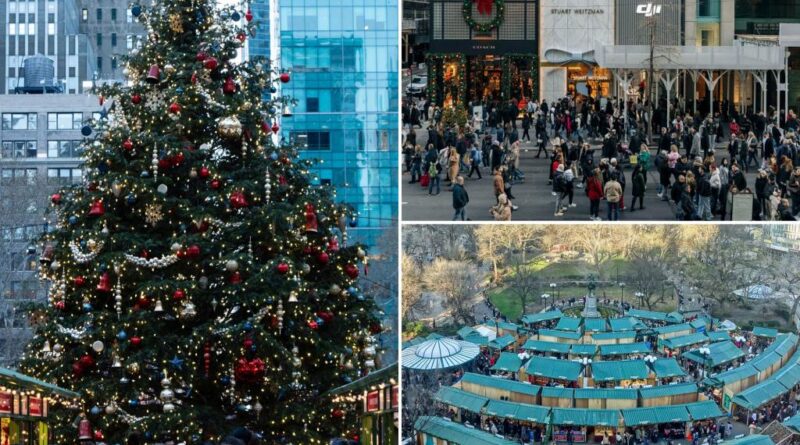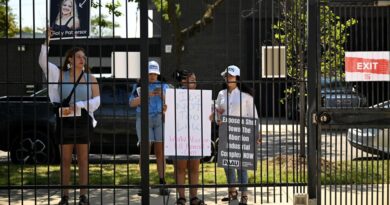New York’s Retail Revival Shines Bright This Holiday Season

It’s that festive time of the year. Ho, ho, ho — let’s embrace luxury, extravagance, and lavish treats!
Skip the “Tale of Two Cities” narrative. If your focus this season lies with the “less fortunate,” the homeless, or the disenfranchised, feel free to browse through the many critiques aimed at middle- and upper-class individuals for their alleged materialism.
For those of us who contribute 99% of the city’s taxes, savor peaceful family moments, and comply with the law, conspicuous consumption is delightful. We have every right to celebrate the vibrant resurgence of the Big Apple’s commercial scene.
The state of our retail landscape may serve as a more tangible indication of the city’s social and economic vitality than stark figures on crime, inflation, and housing shortages. This festive shopping season, illuminated by bright lights and despite the rain, traffic jams, and subway issues, showcases that renewal.
Bricks-and-mortar retail is making a comeback after suffering from online shopping, as anyone who visits Bloomingdale’s, Macy’s, or TJ Maxx will confirm.
The glimmering LED snowflake above Fifth Avenue at 57th Street symbolizes the city’s revival. Among the most encouraging news out of the Big Apple since March 2020 is the surge in new store openings — not just cannabis shops or Dunkin Donuts (although those are numerous too), but a host of new venues for middle-income and affluent shoppers to admire and purchase trendy attire, jewelry, home goods, and gourmet foods.
Defying predictions from experts and the COVID-fearing pessimists, the retail scene in New York is thriving once more, even with the undeniable effects of online shopping. Real estate brokers affirm the market is “on fire,” and this time, their optimism is based in reality.
This revitalization isn’t confined to Fifth and Madison Avenues, 34th Street, and other traditional shopping hotspots. It’s not exclusively about luxury, as highlighted by the “High Jewelry” section at the new Van Cleef & Arpels boutique on Madison Avenue.
Yet, I must confess that the aura of abundance uplifts my spirits, even if I can’t splurge. While I have no need for, nor the ability to buy, an Aston Martin like those showcased on Park Avenue and East 57th Street, I enjoy looking them up whenever the mood strikes.
Nothing exemplifies the city’s remarkable ability to rebound after setbacks like the radiant lights illuminating areas that desperately needed improved retail options. This trend isn’t “trickle-down” but rather a sideways investment that enhances neighboring districts.
Consider Broadway south of City Hall. Three years ago, still reeling from the pandemic shutdowns and the extended economic repercussions from 9/11, it was primarily home to bank branches, pizza places, and vacant shops.
While some of those still exist, today you’ll also find Zara, Anthropologie, Urban Outfitters, and the Chinese toy store chain Miniso. French department store Printemps will soon launch its first US location at One Wall Street, while Brooks Brothers is set to establish its flagship at 195 Broadway at Fulton Street.
Not long ago, Houston Street was mostly an eerie stretch of tenements, thrift stores, and empty lots. This area has transformed thanks to the likes of Whole Foods, vintage and secondhand shop No Standing NYC, and the Russ & Daughters Café.
On the western stretch of Atlantic Avenue, the blocks weaving through Brooklyn Heights, Cobble Hill, and Boerum Hill are bustling with modern boutiques and eateries featuring names like East Fork, Misha & Puff, and Paige Sargasson.
This corridor was once famed for quaint antique stores and Arab grocers. Their reduced numbers reflect an evolution rather than a loss of local charm. The area, like many others, has attracted new residents seeking improved shopping and services.
A similar shift is evident in Harlem, where new retail options have skewed toward national chains. Local residents previously suffered from insufficient investment in retail. Recently, West 125th Street has welcomed major players like Whole Foods, Marshals, Victoria’s Secret, Banana Republic, and now Target and Trader Joe’s.
Those who passionately criticize “gentrification” are far outnumbered by local residents who cheerfully flock to the stores.
New York City faces challenges galore, but we can largely cross the issue of vacant and underutilized storefronts off our list. This is indeed a cause for celebration, even as we navigate crowds — which is, ultimately, the best news of all.



